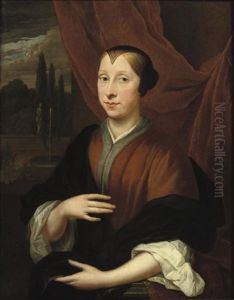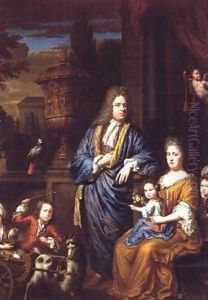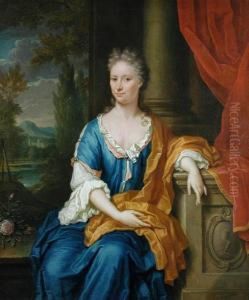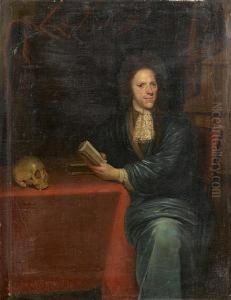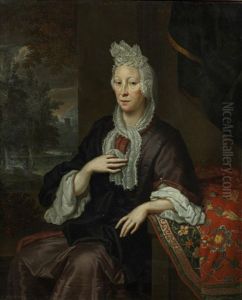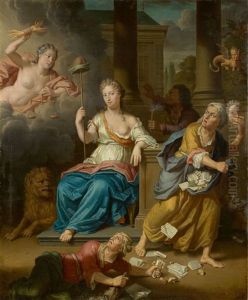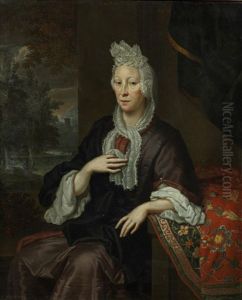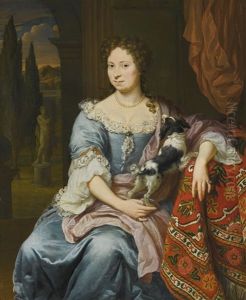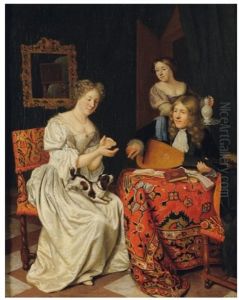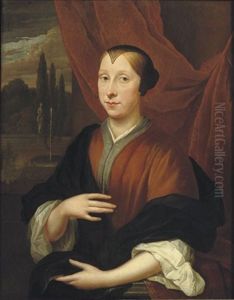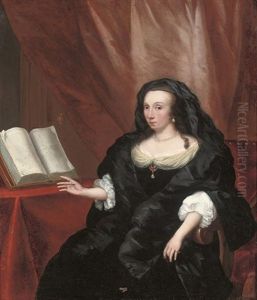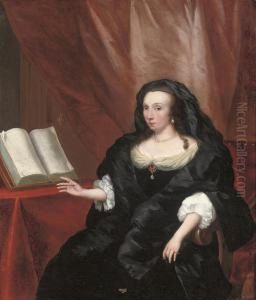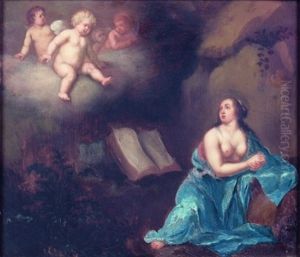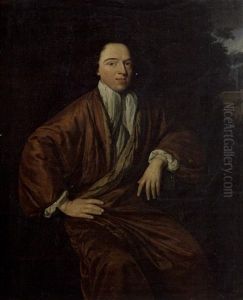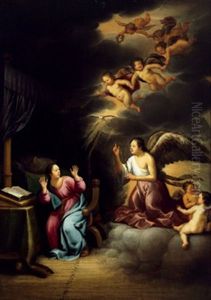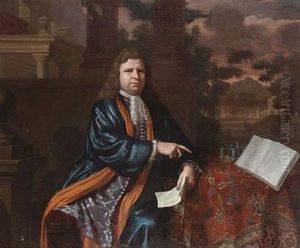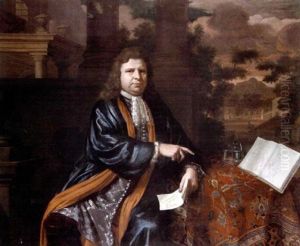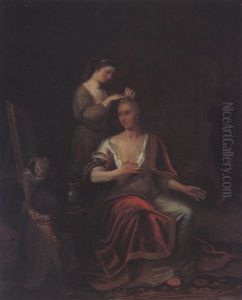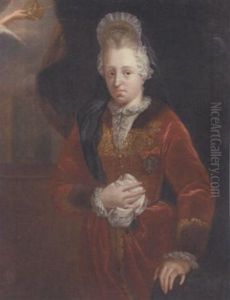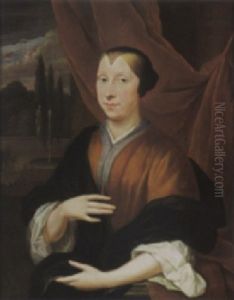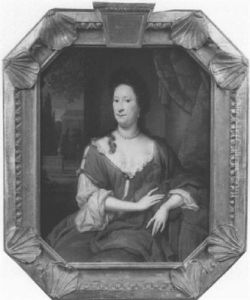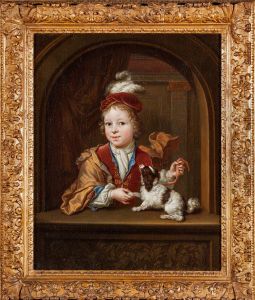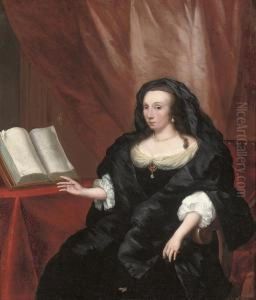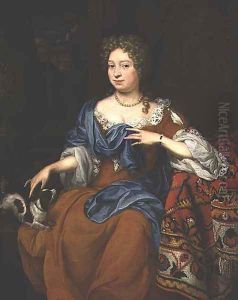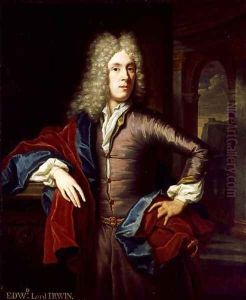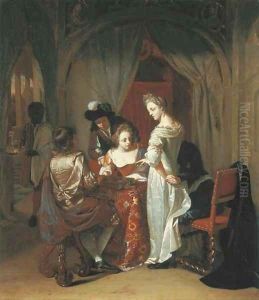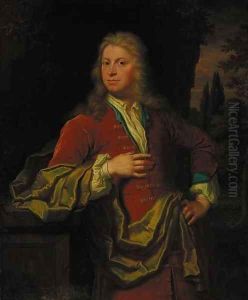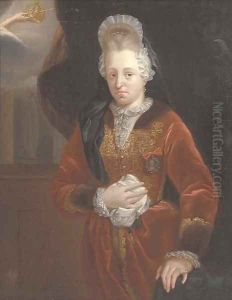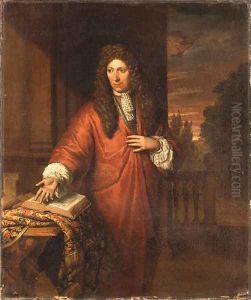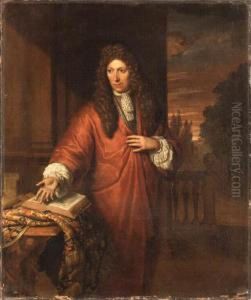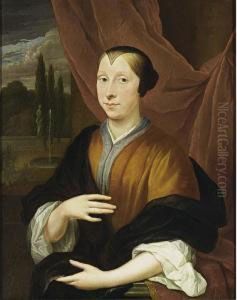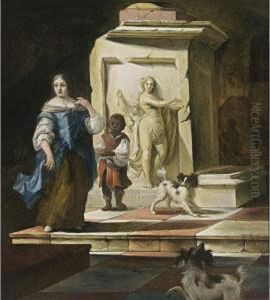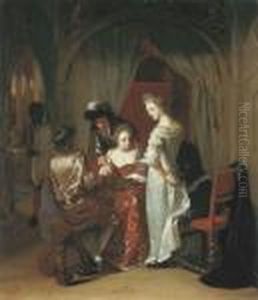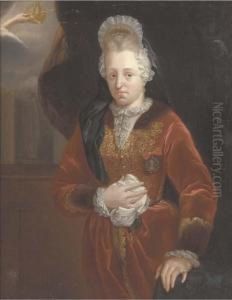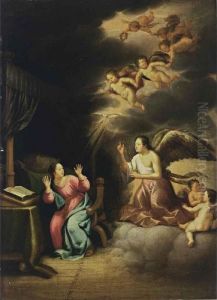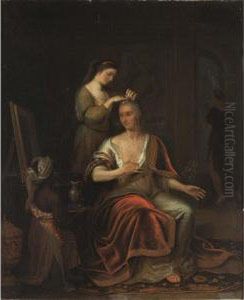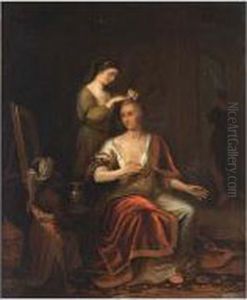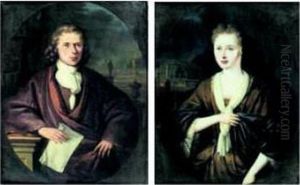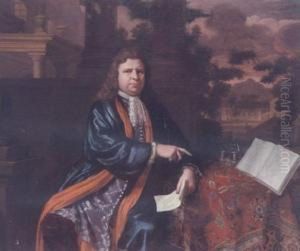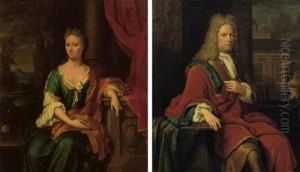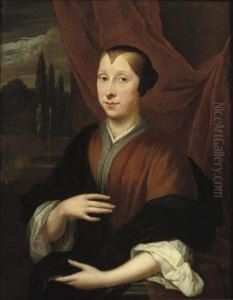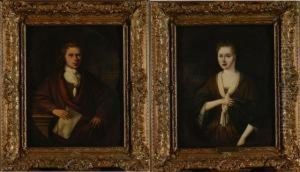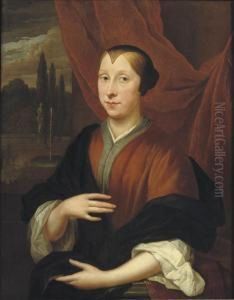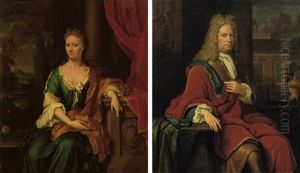Thomas van der Wilt Paintings
Thomas van der Wilt was a Dutch painter born in Piershil, a small town in the Netherlands, in 1659. He is known for his contributions to the Dutch Golden Age of painting, which is renowned for its rich artistic heritage. Van der Wilt received his early training in the arts in Rotterdam, where he became a pupil of the painter Cornelis Picolet. He later continued his studies under the tutelage of the esteemed portraitist Michiel van Musscher in Amsterdam.
Van der Wilt's work was primarily focused on portraits, though he also painted historical subjects, genre scenes, and occasionally landscapes. His style was influenced by the prominent artists of his time, integrating the clear lighting and fine detail characteristic of the Dutch Golden Age. He was particularly adept at capturing the textures of fabrics and the subtleties of facial expressions in his portraits.
Although not as widely known as some of his contemporaries, van der Wilt was a respected artist in his day. He worked in Rotterdam for the majority of his career and was a member of the city's Guild of Saint Luke, a common association for artists and craftsmen. His clients ranged from the middle class to the more affluent members of society, indicating his reputation for quality work.
Thomas van der Wilt's contributions to Dutch art continued until his death in Piershil in 1733. His paintings are valuable pieces of cultural heritage, reflecting the artistic and societal norms of the 17th and early 18th centuries in the Netherlands. Today, his works can be found in various museums, and they continue to be studied for their technique and historical significance within the period's artistic landscape.
